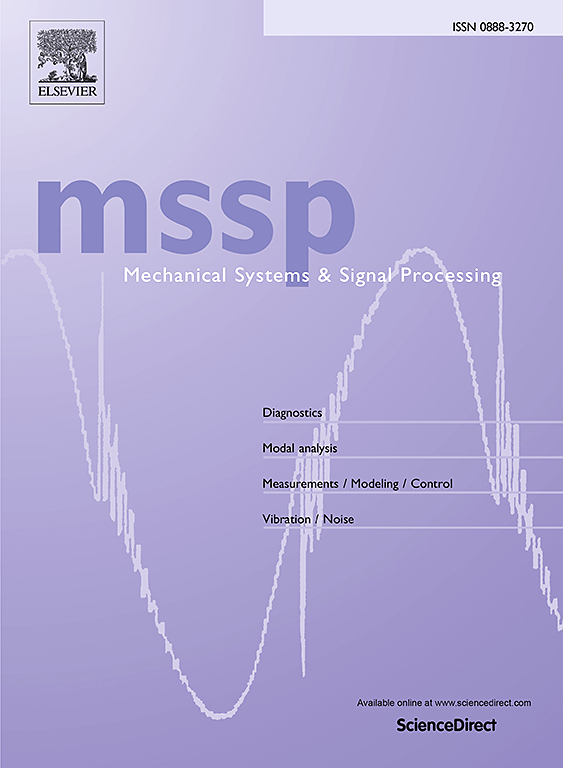Wave-structure conversion and rainbow trapping effect in complex cross-sectional structures
IF 7.9
1区 工程技术
Q1 ENGINEERING, MECHANICAL
引用次数: 0
Abstract
The straight switch rail of the turnout is an engineering structure with variable cross-sections and special-shaped cross-sections. The propagation characteristics of guided waves in it are very complicated. Even for the guided waves of a single mode, the distribution of wave amplitudes varies greatly at different cross-sections of the straight rail. Therefore, this paper innovatively proposes a wave-structure conversion algorithm for variable cross-section structures. Employing this algorithm enables us to discern the pattern of wave amplitude distribution and the evolution of dispersion characteristics as a single mode traverses a straight switch rail. This paper also established a transient finite element model of the straight switch rail. Through the comb-like excitation method based on the principle of group velocity, the propagation of a single guided wave mode in the straight switch rail was simulated, thereby verifying the correctness of the wave-structure conversion algorithm for variable cross-section structures. Meanwhile, the dispersion information of modes in different key cross-sections is obtained based on the algorithm in this paper, and the rainbow trapping effect in straight switch rails is found for the first time. Eventually, the theoretical analysis results and the rainbow trapping phenomenon in the straight switch rail were verified through experiments. The main conclusions obtained are as follows: Under the excitation of specific center frequencies, some modes will exhibit the rainbow trapping effect, which will cease to propagate forward in the healthy straight switch rail and generate a completely reflected echo.

复杂截面结构中的波结构转换与彩虹俘获效应
道岔直岔轨是一种变截面、异形截面的工程结构。导波在其中的传播特性非常复杂。即使是单模态导波,在不同的直线截面上,波幅值的分布也有很大的差异。为此,本文创新性地提出了一种变截面结构的波-结构转换算法。利用该算法,我们可以识别出单模穿越直线开关轨时的振幅分布和色散特性的演变规律。本文还建立了直线开关导轨的瞬态有限元模型。通过基于群速度原理的梳状激励方法,模拟了单导波模式在直线开关导轨中的传播,从而验证了变截面结构波结构转换算法的正确性。同时,基于该算法获得了不同关键截面上模式的色散信息,并首次发现了直线开关轨中的彩虹俘获效应。最后,通过实验验证了理论分析结果和直线开关轨中的彩虹捕获现象。得到的主要结论如下:在特定中心频率的激励下,某些模式会出现彩虹捕获效应,在健康的直开关轨中停止向前传播,产生完全反射的回波。
本文章由计算机程序翻译,如有差异,请以英文原文为准。
求助全文
约1分钟内获得全文
求助全文
来源期刊

Mechanical Systems and Signal Processing
工程技术-工程:机械
CiteScore
14.80
自引率
13.10%
发文量
1183
审稿时长
5.4 months
期刊介绍:
Journal Name: Mechanical Systems and Signal Processing (MSSP)
Interdisciplinary Focus:
Mechanical, Aerospace, and Civil Engineering
Purpose:Reporting scientific advancements of the highest quality
Arising from new techniques in sensing, instrumentation, signal processing, modelling, and control of dynamic systems
 求助内容:
求助内容: 应助结果提醒方式:
应助结果提醒方式:


